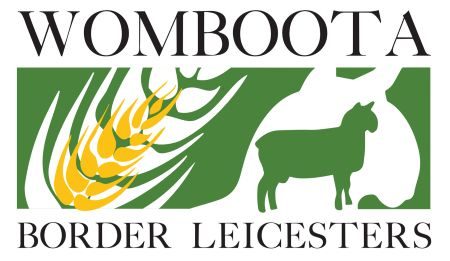The prime lamb industry stands at a crossroads. While composite breeding systems continue to gain popularity, promising genetic gains and simplified management, we might be wise to look at the lessons learned by two other major livestock industries that have already walked this path.
The Chicken Industry’s Hard Line on Pure Breds
The commercial chicken industry offers perhaps the most compelling case study in the importance of elite pure lines as the genetic foundation for structured crossbreeding, ensuring production consistency and efficiency.
As a number of academics in animal genetics have observed: The poultry industry learned to maintain their pure bred flocks and have one or two crosses while still maintaining their pure lines. They developed strict crossbreeding programs to maximise their production systems and demonstrated advances in broiler performance.
This approach isn’t just theoretical—it’s the backbone of a multi-billion dollar industry that feeds the world with remarkable efficiency and consistency.
Pork Follows the Same Pattern
Initially attracted to composite breeding for its apparent simplicity and genetic diversity, pork producers eventually discovered that composites led to reduced consistency in feed efficiency, product quality, and overall production benefits.
Composite or synthetic pig breeds have been developed in some regions (for example, the Woori-Heukdon region in Korea), but these programs often faced increased inbreeding and genetic dispersion.
The pork industry found when composite breeds are used as closed populations, the introduction of new genetic material from pure breeds became essential to restore vigor and consistency.
PIC (Pig Improvement Company), a global leader in pig genetics, maintains purebred nucleus herds to supply crossbred commercial pigs, emphasising the value of genetic integrity and repeatability.
The industry’s vigilance in maintaining pure breed foundation stock with controlled crossbreeding programs ensured the predictability and performance that commercial producers demanded.
The lesson is clear: when you dilute genetic purity, you often dilute performance advantages.
The Sheep Industry’s Current Trajectory
Today’s sheep industry appears to be heading down a path that the poultry and pork industries have refused to travel. Sheep Genetics Australia’s new cross flock analysis system is combining Border Leicesters, Suffolks, and virtually every breed together, providing composite breeders with unprecedented genetic data and what appears to be a significant competitive advantage.
On the surface, this seems logical. Why not take a bit of Border Leicester for maternal weaning weight, some Suffolk for muscle development, and perhaps some Finn for multiple births? The Australian Sheep Breeding Values (ASBVs) show impressive genetic gains for these composite flocks.
The Critical Questions
But this approach raises fundamental questions that the chicken and pork industries learned to ask and answer for themselves:
Repeatability: When a composite sire shows outstanding ASBVs for a particular trait, how repeatable is that performance compared to a pure bred sire? The genetic lottery of composite breeding means each generation is essentially an experiment.
Consistency: What do these high-performing composite animals actually look like in the paddock? Are they delivering consistent performance across different environments and management systems?
Sustainability: If the industry becomes too dependent on composite genetics, what happens when pure breeds are no longer available to “correct” genetic drift and maintain advancement?
The Pure Breed Advantage: Hybrid Vigour
The power of pure breed systems lies in their ability to deliver true hybrid vigour. When we maintain pure lines, we preserve two unrelated gene pools that can be crossed for maximum heterosis benefit. This creates predictable, sustainable genetic improvement rather than the genetic roulette of composite breeding.
Pure breed systems offer the stability and predictability that commercial producers need. A Border Leicester crossed with a Merino delivers consistent, repeatable results because both parent breeds maintain their genetic integrity.
The Practical Solution
The solution to maximising prime lamb production efficiency may already be right in front of us, proven by successful producers across the country. Rather than trying to create the perfect composite animal on-farm, consider the specialised approach:
First Cross Ewes: Purchase first cross ewes that deliver consistent, repeatable genetics with proven hybrid vigour.
Three-Way Terminal Cross: Use a terminal sire over first cross ewes to produce prime lambs with predictable performance characteristics.
Specialisation: Focus your management and resources on what you do best—whether that’s breeding replacement females or finishing prime lambs—rather than trying to do everything.
The Wheat Seed Analogy
This approach is similar to purchasing certified wheat seed rather than trying to become a plant breeder on your own farm. Specialist seed producers invest heavily in genetic improvement, quality control, and consistency—allowing farmers to focus on production rather than diluting their efforts across multiple specialised tasks.
When you try to breed replacement sheep, produce prime lambs, and grow out replacement sheep all on the same operation, you’re essentially competing with specialised genetics companies while trying to run a commercial sheep operation.
Looking Forward
The chicken and pork industries learned that genetic shortcuts often lead to long-term problems. Their loyalty to pure breed foundation stock with controlled crossing programs maintains the performance and consistency that commercial producers demanded.
The prime lamb industry has the opportunity to learn from these experiences without having to repeat costly mistakes. Pure breed systems, first cross ewes, and terminal crossing programs offer a proven path to sustainable genetic improvement.
The question isn’t whether we can make composite breeding work—it’s whether we should, when history shows us there’s a better way. The foundation of sustainable livestock production has always been built on genetic integrity, predictable performance, and specialised breeding programs.
As we move forward, the choice is clear: we can learn from the experiences of other industries, or we can forge a path that leads us to a dead end.
The chicken and pork industries have shown us the way—perhaps it’s time for the prime lamb industry to follow their lead.
